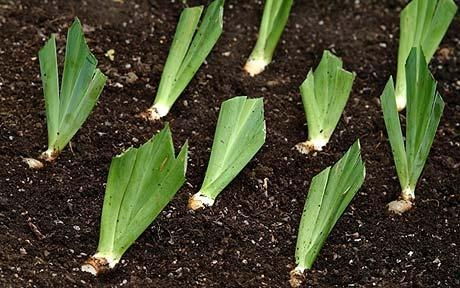By Carolyn Melf, Butte County Master Gardener, August 12, 2016.
If you haven't trimmed and divided your iris this summer, now is the time to do it.
Bearded iris plants need to be thinned or divided every 3-5 years. A single rhizome sprouts new rhizome offshoots many times over the years, developing into a heavy crisscross clump, often choked with old leafless rhizomes. Eventually the mass of leaves will exclude sun and air from the roots. This will lead to poor flowering and often weakens the plants, making them more susceptible to insects and diseases.

With a sharp stream of water from a garden hose, remove all soil from the roots and rhizomes. Trim roots to about 3 inches and trim the leaf fans to 6 inches to prevent them from tipping over when you replant them. Let them dry before replanting.
Iris are greedy plants and prefer to be placed in virgin soil, but you can fool them by amending the soil with well-composted planting mix. Rhizomes should be placed 18 to 24 inches apart. For each one, dig a hole, place a mound of soil in the center of the hole, then place the rhizome on the mound and spread its roots downward. Cover with 1 inch of soil. Don't plant them too deep! Plant additional leaf fans in the planting bed facing the same direction. This way the rhizomes will all grow in the same direction and there will be less crowding.
Newly-set plants need moisture to help their root systems become established. Water weekly if the weather is dry.
Iris will bloom sparsely the first year after planting but will bloom well in the second and third years.